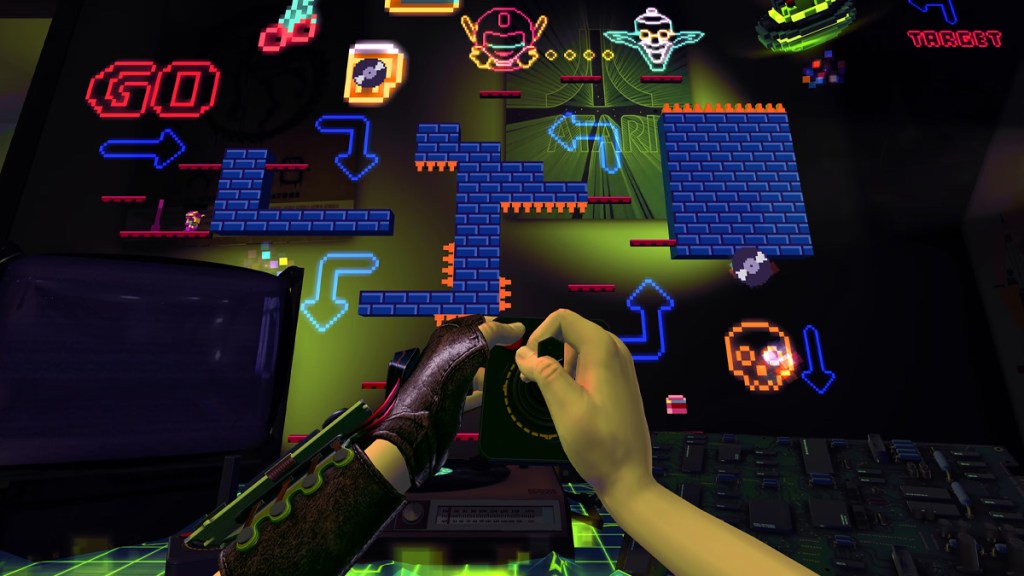Developer Arvore recently announced its upcoming virtual reality game Pixel Ripped 1978 at GDC 2023. I was given a sneak peek, and got some hands-on time, with the team’s first fully licensed addition to its line of Pixel Ripped games.
Both of the studio’s previous releases, Pixel Ripped 1989 and Pixel Ripped 1995, were loosely based on games from their relative time era, but couldn’t specifically name names due to licensing issues. Thanks to a partnership with Atari, this next addition to the series won’t be so vague.
Atari x Arvore
Atari first approached Arvore at the DICE Awards in 2022, the studio’s CEO Ricardo Justus tells me, with the veteran publisher outlining the possibility of collaborating on the next Pixel Ripped adventure. At this point, Pixel Ripped 1978 was already deep in the development process and almost ready to be announced, but this partnership opened the door to a world of possibilities.
Atari’s collaboration meant that Arvore was now allowed to incorporate almost anything from the Atari-owned library. The development team had to go back to the drawing board and start adding actual Atari references, rewriting the story so as to get as much Atari goodness in there as possible.
Putting on nostalgia goggles

This official licensing allows Pixel Ripped 1978 to really lean in on the nostalgia factor. Playing as Bug, the game developer that created the first Pixel Ripped game, you begin sitting in your work cubicle playing on the Atari 2600. In VR, I was transported back to nine-year-old me playing the same console at Christmas — only this time, I could jump straight into the games I was playing.
Thanks to the technical capabilities of the PSVR 2, the transition from a game developer sitting at a desk to a hero solving puzzles and shooting baddies is seamless and smooth. When you’re in a game, you’re controlling Dot, who’s tasked with repairing the Atari games that Bug is developing from the inside and restoring them to their full pixelated glory. For those that have played the previous Pixel Ripped titles, you’ll be reunited with familiar characters and meet colorful new ones in this VR game-within-a-game adventure.
The power of PSVR 2

Pixel Ripped 1978 is built for the next generation of VR systems, and that means the PSVR won’t be getting it, and even the Meta Quest 2 has to be tethered to a gaming PC to play it. The resolution that the PSVR 2 brings with it, as well as the processing power of the PS5, makes this VR game super smooth. The new controllers helped with immersion for the experience, and made grabbing things pretty easy.
When it comes to moving from point A to point B in the FPS part of the game, the developer uses a directed focus effect, which basically eliminates your peripheral vision while moving by sliding blinders on you, and eliminates any chance for motion sickness. That’s something that almost all VR developers are doing now with current-gen VR systems, and it’s a game changer.
Conclusion

I was allowed to play through the first chapter of the game for the demo, and the story is intriguing and entertaining, with some colorful character. The graphics were impressive in VR, with smooth transitions and smooth movements, showcasing the power of the PSVR 2 well. Its newfound partnership also makes this a nostalgic celebration of Atari-era games, something that those who — like me — grew up with old-school systems like the 2600 will greatly appreciate.
Pixel Ripped 1978 is releasing sometime this summer for the PSVR 2, PC VR, and the Meta Quest 2 while tethered.




